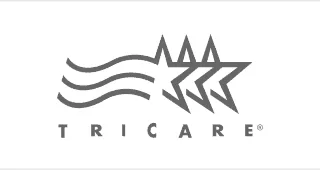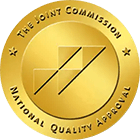What is Art Therapy?
Art therapy is a form of addiction treatment that helps individuals fight addiction by expressing their emotions through art. This may include doodling, sketching, painting, or even sculpting. Art therapy helps clients improve their physical and mental states. The goal of art therapy is to improve a patient’s overall well-being.
By encouraging people to engage in art therapy, they are able to grow in many different facets of life. They learn to find inner peace, contentment, and self-control. While art therapy includes drawing and painting, it also includes music and dance.
Art Therapy History
Art therapy has been used for hundreds of years to battle various conditions, such as mental illness, cancer, and addiction. It is widely practiced across the world and is a major component of many treatment centers. Art therapy creates a safe and positive environment in which our clients are able to find sanctuary.
Traditional forms of treatment can be stressful and unnerving, which may cause some people to give up. Those who suffer from conditions like anxiety and schizophrenia can find peace in art therapy centers.
Music in Art Therapy
In addition to drawing and painting, art therapy includes music as well. This includes singing, making music, and even just listening to music. Music helps the mind stay at ease, which is a key component of the recovery process. Music has been found to be vital in the healing process because of the powerful effects it has on the human mind. Based on the music that our clients are interested in, the staff is able to cater to each one individually.
Dance in Art Therapy
Dance is one of the most constructive forms of art therapy for addiction treatment. A major component of the healing process is finding an activity that clears the mind. Dance is an excellent form of physical exercise, and also facilitates mental growth. It harmonizes freedom of mind, body, and spirit. The beauty of dance therapy is that anyone can participate. Every patient has their own unique way of expressing themself, and this can be discovered through art therapy for addiction treatment.
What Ages Participate in Art Therapy?
Addiction can be found in every age group, so there are no limitations to who can participate. People ranging from children to senior citizens are actively involved in art therapy. A major appeal of art therapy for addiction treatment is that participants can find joy in what they are doing to overcome addiction. Art does not feel like a task and it can be enjoyed by those receiving treatment.
How Does Art Therapy Work in Addiction Treatment
At Achieve Wellness, art therapy in addiction treatment is used to enhance a patient’s overall well-being through forms of artistic expression. Many people have found peace and comfort by using art therapy for substance abuse treatment. There are many different forms of art therapy, so treatment centers cater to the needs of each patient.
How is Art Related to Addiction?
Art therapy helps minimize the harmful urges of addiction by training a patient’s mind to focus on something productive. Our clients find that when they are occupied with an activity like coloring, their urges are not as strong. Replacing harmful triggers with healthy activities leads to good habits and a lower chance of relapse. The goal of the staff is to help our clients find something that they are interested in, whether it be painting, drawing, singing, etc. What most clients experience during art therapy for addiction treatment is that it reveals a new passion.
What Type of Art Therapy Works Best?
There are many different types of art therapy that are unique in their own way. All methods are effective, it just depends on the patient. For example, a patient that is interested in nature may paint flowers or landscapes. Another might be interested in pottery or sculpting. The overall goal of art therapy for addiction treatment is to help clients find comfort in a form of artistic expression.
What are the Benefits of Art Therapy for Substance Abuse
Improved Communication Skills
There are many different types of art therapy that are unique in their own way. All methods are effective, it just depends on the patient. For example, a patient that is interested in nature may paint flowers or landscapes. Another might be interested in pottery or sculpting. The overall goal of art therapy for addiction treatment is to help clients find comfort in a form of artistic expression.
Stress Relief
Art therapy for addiction opens up the minds of those participating and relieves stress they may have. Art is utilized as a method to help our clients relax and express themselves on a canvas. The art that is created by clients can be used as a way to release frustration. There is no pressure from the staff, which makes it a very positive atmosphere.
Sparks Creativity
When a patient uses art therapy for addiction treatment, they begin to discover their creativity. They let their thoughts and emotions flow through different forms of art. Whether a patient is drawing, singing, or dancing, they are experiencing the necessary growth to overcome addiction.
Regaining Sense of Confidence and Self-Worth
Art therapy allows clients to look deeper into themselves and unlock a new sense of purpose and self-worth. Addiction takes control of a person’s entire life and it can feel near impossible to go back to normal life. The power to overcome addiction comes from within, so using art therapy helps clients find that strength. It can be hard to leave the past behind and find a new identity after rehabilitation. Art therapy for addiction treatment provides the means to do this in an effective and intentional way.
Emotional Recovery
Art therapy acts as an emotional relief for clients. It is extremely difficult to deal with the symptoms of addictions, and art therapy helps fight these effects. Our clients are encouraged to open their minds and allow creativity to flow. It is a very calm and soothing experience that will ease the struggles of even the most troubled clients.
Maintaining a Sober Lifestyle
Art therapy for addiction treatment is extremely effective for maintaining sobriety. When clients create art, they begin to mature and grow. They start to see the effects that addiction has had, not only on themselves but on loved ones. Art therapy instills a sense of maturity that is necessary for overcoming addiction.
Relapse Avoidance
No matter how effective therapy is, there will always be a temptation to relapse. The goal of art therapy is to prevent relapse by eliminating bad habits and reinforcing good ones. One practice used in art therapy has participants design cards that encourage self-confidence. For example, a patient might draw on a card that says “stay strong” as a reminder to keep pushing forward.
Get Help Today
Art Therapy For Addiction Treatment At Achieve Wellness
Art therapy is a method that is becoming widely used because of its effectiveness. Because of its peaceful nature, it has become a widely used practice for addiction treatment. This type of treatment can be an effective form of help for anyone struggling with addiction. Art therapy is not limited to one certain addiction, so it could benefit anyone with any kind of addiction. Addiction is a struggle that can consume a person’s life and lead to destruction. If you are interested in art therapy or have any other questions, please reach out to us today.
References
https://www.urmc.rochester.edu/encyclopedia/content.aspx?ContentTypeID=85&ContentID=p07338
We work with most insurance companies. Please note we are not affiliated with or endorsed by insurance companies.
No Medicaid Accepted.


















